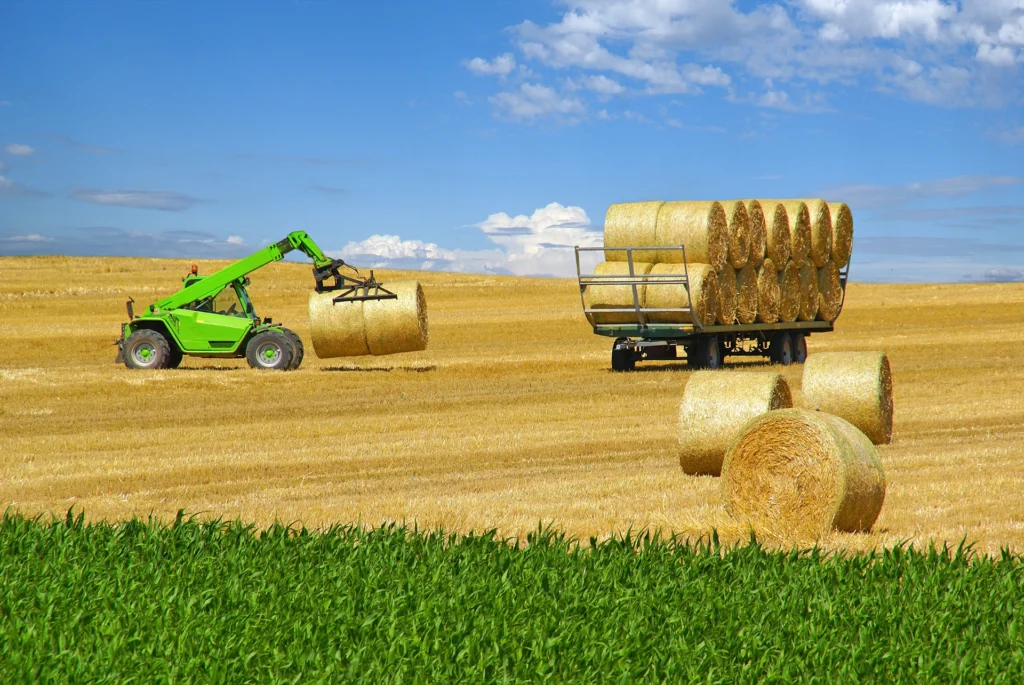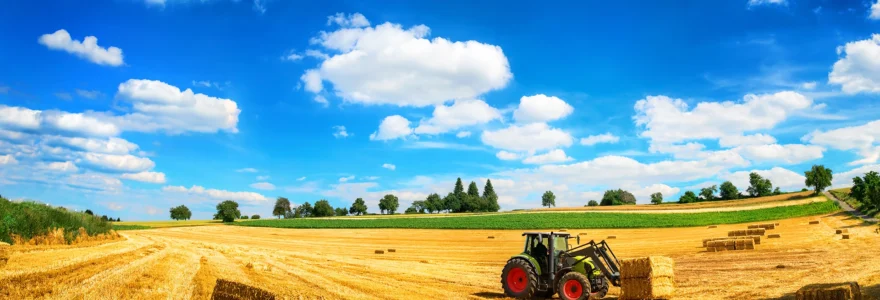Bale unroller spreaders have become essential equipment for modern farmers seeking efficiency in livestock bedding and feeding operations. As agricultural machinery evolves, the adaptability of these implements to various host vehicles, particularly tractors and telehandlers, has become a crucial factor in their selection. The versatility to switch between different power sources can significantly enhance farm productivity and reduce the need for multiple specialized machines.
Comparative analysis of bale unroller spreader compatibility
When evaluating bale unroller spreaders for their adaptability, several key factors come into play. The ease of attachment, power source compatibility, and operational flexibility are paramount considerations. Manufacturers have responded to the demand for versatile equipment by developing systems that can seamlessly transition between tractors and telehandlers, often with minimal modification.
One of the primary challenges in creating a truly adaptable bale unroller spreader lies in designing a universal mounting system that can accommodate the different geometries and hydraulic setups of tractors and telehandlers. This challenge has spurred innovation in modular design approaches, allowing for quick changeovers between different host vehicles.
Tractor-mounted bale unroller spreaders
For farmers seeking both efficiency and adaptability, the
mounted bale unroller for feeding and bedding wrapped bales provides a powerful solution that bridges feeding and bedding operations. Its design allows seamless use with a tractor’s rear linkage or front loader, ensuring quick handling of round or wrapped bales while maintaining operator safety and control. With hydraulic-driven conveyor chains and synchronized motion, it enables smooth bale rotation and uniform distribution of feed or straw, even under intensive workloads. This versatility makes it ideal for mixed livestock farms where rapid transitions between tasks are essential.
Three-point hitch attachment systems
The three-point hitch remains a standard feature on tractors, making it a logical starting point for bale unroller spreader adaptability. Many manufacturers offer models that can be quickly attached to this system, providing stability and ease of use. The
three-point linkage allows for precise control of the spreader's position, which is crucial for accurate distribution of bedding material.
Pto-driven unroller mechanisms
Power Take-Off (PTO) systems are a hallmark of tractor-implement interactions. Bale unroller spreaders designed for PTO operation benefit from the consistent power delivery that tractors provide. This direct mechanical connection ensures efficient operation even when handling dense or difficult bales.
Hydraulic control integration
Modern tractors offer sophisticated hydraulic systems, and adaptable bale unroller spreaders capitalize on this by incorporating hydraulic motors and cylinders for various functions. This integration allows for fine control over spreading width, bale rotation speed, and discharge rate, enhancing the implement's versatility across different bedding scenarios.
Tractor size and power requirements
An adaptable bale unroller spreader must be compatible with a range of tractor sizes. Manufacturers often design their spreaders to operate efficiently with tractors from 60 to 150 horsepower, covering the majority of farm tractor fleets. This broad compatibility ensures that the implement can be used with existing equipment without necessitating additional investments.
Telehandler-adapted bale unroller spreaders
Quick-attach mounting plates
Telehandlers typically feature quick-attach systems for rapid implement changes. Adaptable bale unroller spreaders designed for telehandlers incorporate compatible mounting plates that allow for swift attachment and detachment. This feature is particularly valuable in operations where the telehandler serves multiple functions throughout the day.
Boom extension compatibility
The extendable boom of a telehandler offers unique advantages for bale handling and spreading. Adaptable spreaders designed for telehandlers often feature a low-profile design that maintains visibility and maneuverability when mounted on an extended boom. This configuration allows for precise placement of bedding material, even in hard-to-reach areas of livestock housing.
Load capacity and stability considerations
Telehandlers have varying lift capacities depending on boom extension and angle. Bale unroller spreaders designed for telehandler use must be engineered to maintain stability across the operational range of the host vehicle. Manufacturers achieve this through careful weight distribution and by offering models sized appropriately for different telehandler classes.
Hydraulic system synchronization
Synchronizing the hydraulic systems of the spreader with the telehandler is crucial for smooth operation. Adaptable designs often feature simplified hydraulic connections and flow control valves to ensure compatibility with a wide range of telehandler hydraulic setups. This synchronization extends to the control systems, with many models offering in-cab controls that integrate seamlessly with the telehandler's existing interface.
Universal bale unroller spreader designs
Modular attachment interfaces
The pinnacle of adaptability in bale unroller spreaders is achieved through modular attachment interfaces. These systems allow for quick conversion between tractor and telehandler mounting configurations. Typically, this involves a set of interchangeable brackets or adapters that can be swapped out in minutes, minimizing downtime when transitioning between host vehicles.
Adjustable frame configurations
Some manufacturers have developed bale unroller spreaders with adjustable frames that can be reconfigured to suit different mounting positions. This might include telescoping sections or pivot points that allow the spreader to maintain optimal performance whether mounted on a tractor's three-point hitch or a telehandler's boom.
Multi-power source adaptability
Truly versatile bale unroller spreaders are designed to operate efficiently regardless of the power source. This adaptability is achieved through dual-drive systems that can switch between PTO and hydraulic power, often with minimal operator intervention. Such flexibility ensures that the spreader can perform consistently across different host vehicles and operating conditions.
Teagle tomahawk series analysis
The Teagle Tomahawk series exemplifies the trend towards universal adaptability in bale unroller spreaders. These machines are designed with a modular approach that allows for easy conversion between tractor and telehandler mounting. The series includes models that can be operated via PTO or hydraulic systems, catering to the diverse needs of modern farming operations.
The ability to seamlessly transition between tractor and telehandler operation represents a significant advancement in bale unroller spreader design, offering farmers unprecedented flexibility in their bedding and feeding operations.

Key features for enhanced adaptability
Adjustable spreading width mechanisms
Adaptable bale unroller spreaders often feature mechanisms for adjusting the spreading width. This might include deflector plates or variable-speed rotors that can be controlled from the operator's position. Such features allow the spreader to perform effectively in different housing layouts, whether mounted on a tractor or telehandler.
Variable speed control systems
The incorporation of variable speed control systems enhances the adaptability of bale unroller spreaders across different power sources. These systems allow operators to fine-tune the spreading rate and distance, regardless of whether the spreader is powered by a tractor's PTO or a telehandler's hydraulics. This flexibility is crucial for maintaining consistent bedding quality across various livestock housing configurations.
Bale size accommodation range
An adaptable bale unroller spreader must be capable of handling a wide range of bale sizes and types. Many modern designs incorporate adjustable cradles or feed mechanisms that can accommodate round bales from 4 to 6 feet in diameter, as well as large square bales. This versatility ensures that the spreader remains useful as baling practices evolve or when sourcing bedding material from different suppliers.
Mchale C460 adaptability case study
The McHale C460 bale unroller spreader serves as an excellent case study in adaptability. This model features a unique design that allows it to be mounted on both tractors and telehandlers with minimal reconfiguration. Its hydraulic system is engineered to be compatible with a wide range of host vehicles, and the spreading mechanism can be adjusted to suit various bedding materials and housing layouts.
Technological advancements in adaptable unroller spreaders
ISOBUS integration for universal control
ISOBUS technology has revolutionized the interface between implements and host vehicles. Adaptable bale unroller spreaders that incorporate ISOBUS compatibility can seamlessly integrate with the control systems of modern tractors and telehandlers. This universal communication protocol allows for precise control and monitoring of the spreader's functions, regardless of the host vehicle, enhancing overall operational efficiency.
Gps-guided spreading precision
Some advanced bale unroller spreaders now incorporate GPS guidance systems. This technology allows for precise and consistent spreading patterns, even when switching between different host vehicles. GPS-guided systems can automatically adjust spreading rates and patterns based on the speed and position of the vehicle, ensuring uniform bedding distribution across large areas.
Kuhn primor 15070 M smart control features
The Kuhn Primor 15070 M exemplifies the integration of smart control features in adaptable bale unroller spreaders. This model offers electronic control of spreading functions, with the ability to store and recall settings for different bedding scenarios. Its adaptability extends to the control interface, which can be seamlessly integrated with both tractor and telehandler systems, providing consistent operation regardless of the host vehicle.
As the agricultural industry continues to evolve, the demand for versatile and adaptable equipment grows. Bale unroller spreaders that can effortlessly transition between tractors and telehandlers offer significant advantages in terms of operational flexibility and cost-effectiveness. Manufacturers are responding to this need with innovative designs that prioritize universal compatibility, ease of use, and advanced control systems. For farmers seeking to optimize their bedding and feeding operations, investing in a highly adaptable bale unroller spreader can lead to substantial improvements in efficiency and productivity across their livestock management practices.

